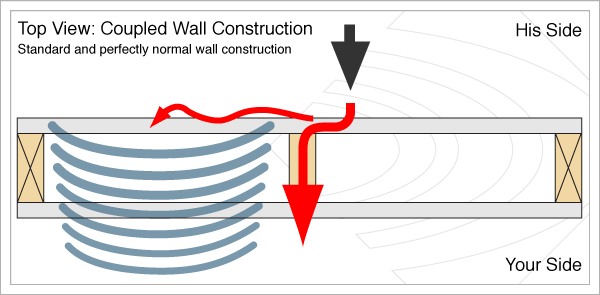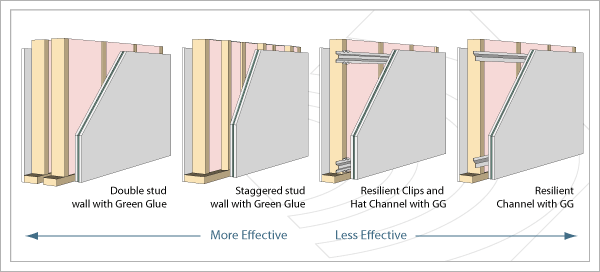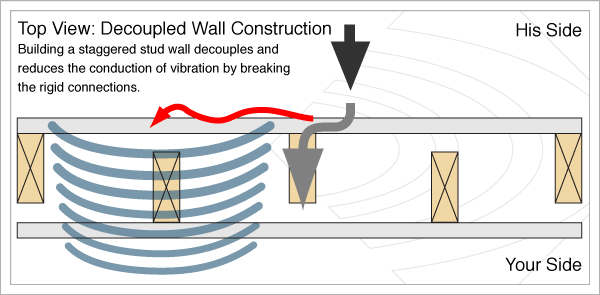Soundproofing and Construction, Part 1
By Ted White
Soundproofing Company, Inc.
Introduction to Soundproofing in Construction: The Four Elements of Building a Soundproofed Room
If you are looking for maximum sound isolation you really need to consider a multi-faceted approach to soundproofing. There are several distinct “elements” involved with soundproofing during construction. Each of these construction elements perform a separate task, and therefore each should be deployed for maximum results in soundproofing. In the following dialog, we are trying to stop sound vibrations from getting to "your" side of the wall or ceiling from “his” side.
Here is the most common noise problem through a standard wall. He's making noise on “his” side of this wall, and you hear it on “your” side.

So that’s the noise problem. Let’s now look at the soundproofing solution.
1. Decoupling & Soundproofing
Decoupling is the first element in soundproofing. Sound is nothing more than a vibration. The sound vibration will travel (conduct) easily if there is a nice solid direct pathway to follow. Imagine an iron pipe. Strike one end and the sound vibration is easily and rapidly conducted to the other end of the pipe. We would like to block that conduction. We do this by “decoupling.”
For your wall (or ceiling) we want less sound vibration to travel from one side to the other. It is extremely helpful if we decouple the framing in our walls (and ceilings). It's simple, inexpensive and highly effective. Let's look at different methods of decoupling used to achieve a level of soundproofing:

All of these soundproofing methods offer varying degrees of separation of the drywall on one side from the drywall on the other side. All of these walls are superior for soundproofing compared to a single stud (common) wall.

See how decoupling the wall studs limits the sound vibration trying to conduct through the wall? The grey line reflects the soundproofing success we have had, but obviously there’s more work to do. Note how the decoupling did not affect the airborne sound transmission.
Click on Soundproofing to continue.






